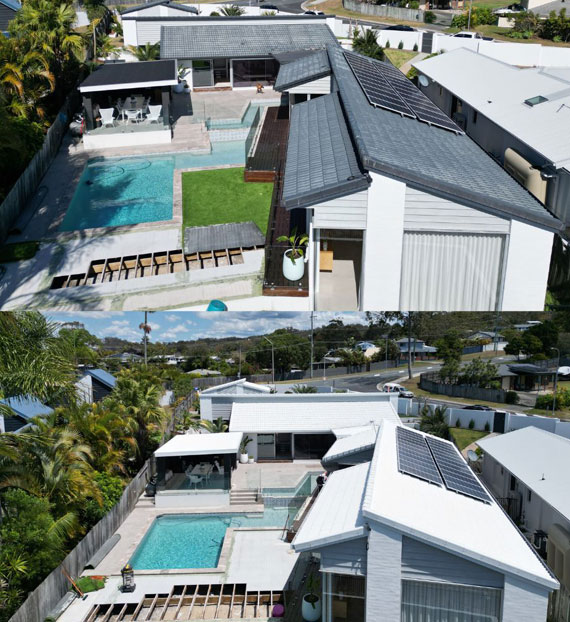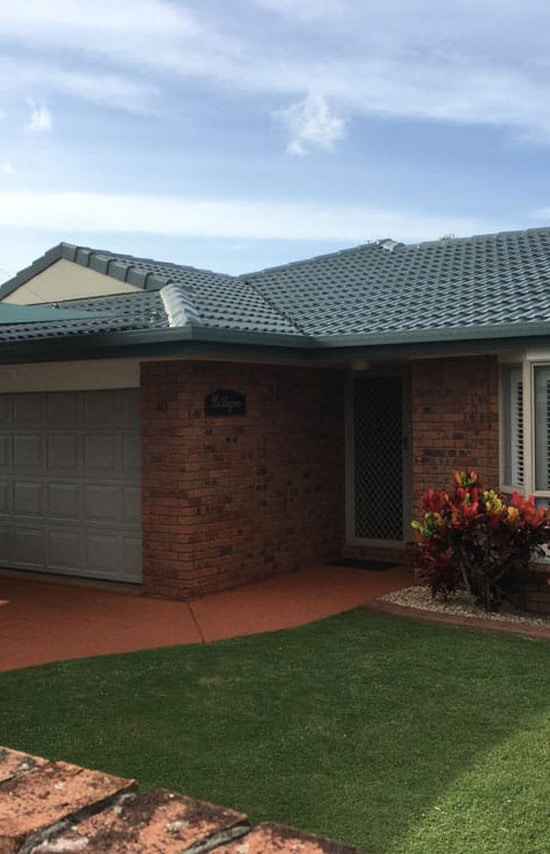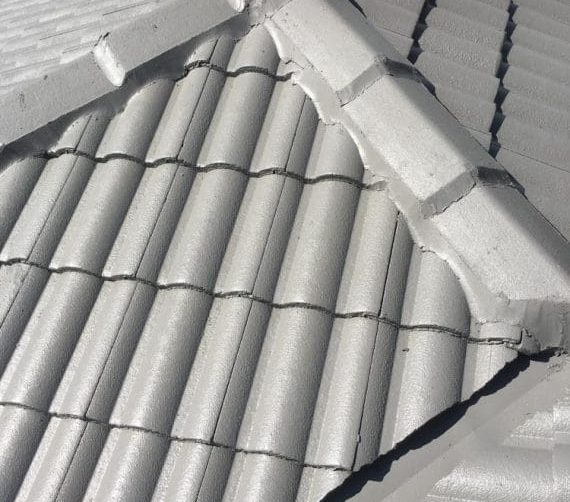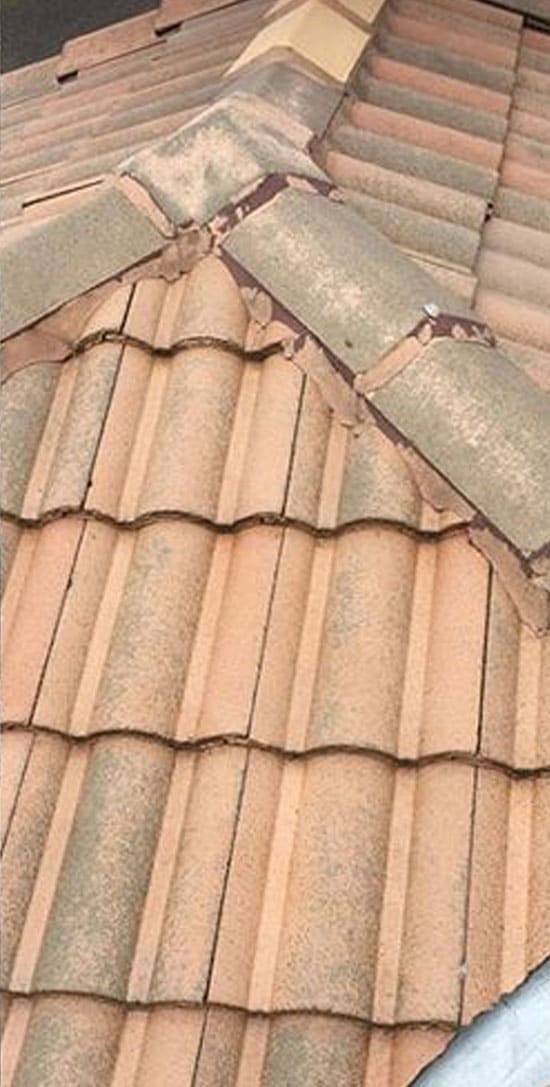Cooling Home
Advanced Cooling Home on the Gold Coast
How to cool your home naturally
- A Roof prevents water entry into the building.
- A Roof provides a dry + safe environment inside, with the help of the walls to isolate against outside temperatures and outside elements.
- A Roof often contributes a large factor to the aesthetic style and current maintenance of the exterior of a property.
Additionally, a roof provides an enormous surface area which collects solar energy. On the positive side this solar energy can be harvested and turned into electrical energy using a system containing P.V panels which helps to reduce the household energy usage. Unfortunately though, in the hotter months of the year in Australia this huge surface area heats the interior of a home.


How does this happen?
The roof surface becomes extremely hot, especially so if it’s a darker colour. The surface then heats the trapped air in the roof cavity below. This heated air radiates through the ceiling into the interior of the home.
Isn’t the insulation in the ceiling supposed to stop all that heat from entering the rooms below?
Insulation is a great product and works well up to a point, once there is too much heat built up in the roof cavity, the insulation simply cannot cope. Unfortunately, the most common form of insulation (Fiberglass Batts) are 2-3 inches thick have a limited capacity to hold back the extreme heats found in roof cavities (up to 60 to 70 degrees Celsius) from radiating through to the rooms below. Fiberglass Batts, or any insulation type for that matter is designed to hold a still air layer in place. The problem is that once the air inside the fiberglass batt is heated by the 65–70-degree heat trapped in roof cavity its game over! The heat trapped inside the roof then has no barrier to radiate through the ceiling into the rooms we want to keep cool below.
How do we keep the rooms cool then?
We are left with conventional methods, by employing mechanical means such as ceiling fans, pedestal fans and of course air conditioners. These all incur an expense of having to run electrical motors.
To sum this up, on warmer and hot days we try to maintain temperatures inside the rooms of our houses to early to mid-20 degrees Celsius to feel a sense of comfort. Above the ceiling, the air temperature can be as high as 60-65-70 degrees Celsius. Separating the two is a 2–3-inch layer of insulation and an even thinner layer of gyprock (the ceiling). Now that’s a big ask!


Let’s ask, have you ever experienced this first hand?
Ever walked into a two-story home in one of the hotter months of the year and felt as cool as a cucumber in the bottom story and then started walking up the stairs and felt a wave of heat hit you and thought ‘wow this is an oven up here, it has got to be 5-10 degrees hotter up here.
By the way, a single level home still has the same level of heat radiating though the ceiling, it’s just you don’t notice as much because there is no upstairs level to feel the difference.
To best achieve a cooler home naturally, we need to address the heat absorption by the roof, generating less heat in the roof cavity. Below are 3 different ways to do just that.
- Choose a lighter colour to paint the roof. the lighter the colour, the less solar energy is absorbed by the roof surface resulting in less heat being transferred to the trapped air inside the roof cavity. This having a flow on effect all the way down to inside the rooms of your home.
- Install rotary roof vents (whirlybirds) to help more heat to rise out of the roof and let cooler air in to replace it.
- Install Solar P.V Panels to help provide shade on the roof. Solar P.V panels absorb the solar energy on their surface and as a bonus they provide shade for the roof which again helps to cool your home naturally.






